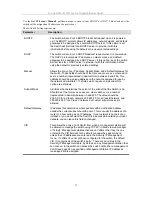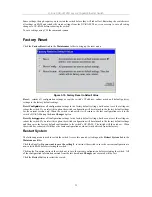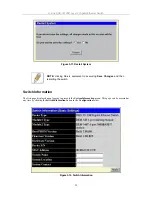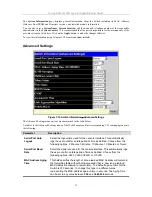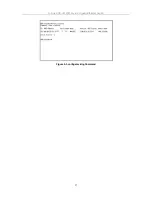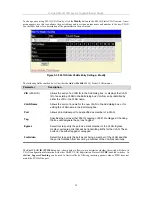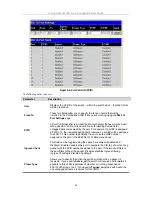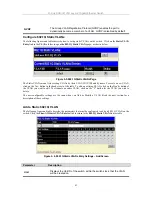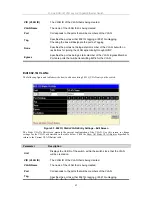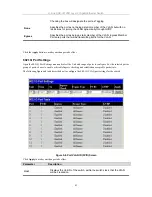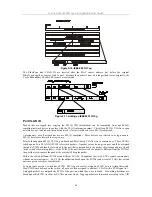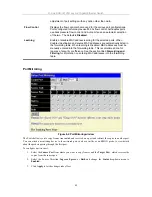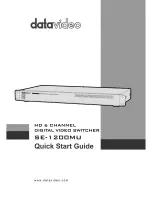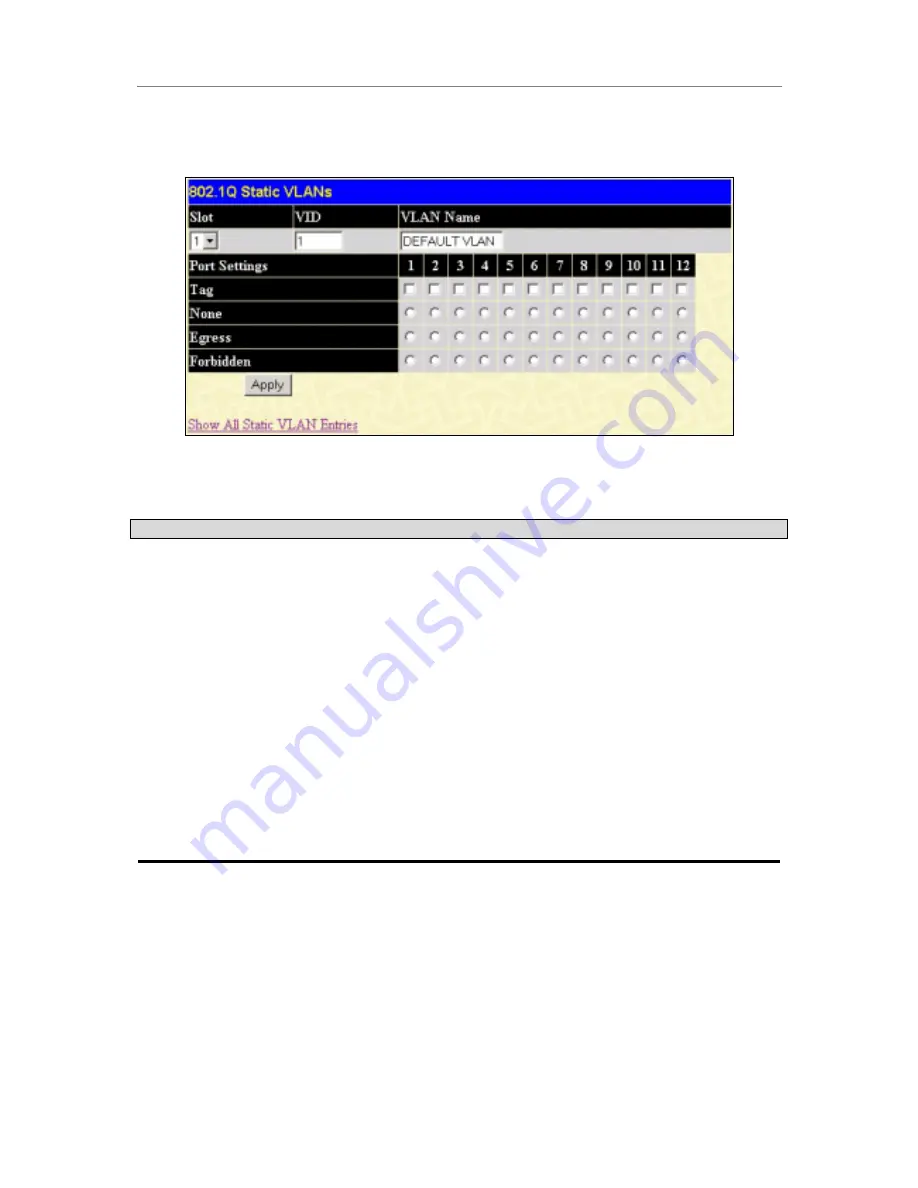
D-Link DGS-3212SR Layer 2 Gigabit Ethernet Switch
To change an existing 802.1Q VLAN entry, click the
Modify
button in the 802.1Q Static VLANs menu. A new
menu appears, use this to configure the port settings and to assign a unique name and number to the new VLAN.
See the table below for a description of the parameters in the new menu.
Figure 5-3. 802.1Q Static VLANs Entry Settings – Modify
The following fields can then be set in either the
Add
or
Modify
802.1Q Static VLANs menus:
Parameter
Description
VID
(VLAN ID)
Allows the entry of a VLAN ID in the Add dialog box, or displays the VLAN
ID of an existing VLAN in the Edit dialog box. VLANs can be identified by
either the VID or the VLAN name.
VLAN Name
Allows the entry of a name for the new VLAN in the Add dialog box, or for
editing the VLAN name in the Edit dialog box.
Port
Allows an individual port to be specified as member of a VLAN.
Tag
Specifies the port as either 802.1Q tagging or 802.1Q untagged. Checking
the box will designate the port as Tagged.
Egress
Select this to specify the port as a static member of the VLAN. Egress
member ports are ports that will be transmitting traffic for the VLAN. These
ports can be either tagged or untagged.
Forbidden
Select this to specify the port as not being a member of the VLAN and that
the port is forbidden from becoming a member of the VLAN dynamically.
The
Port VLAN ID (PVID)
dialog box, shown below, allows you to determine whether the switch will share its
VLAN configuration information with other GARP VLAN Registration Protocol (
GVRP
) enabled switches. In
addition,
Ingress Checking
can be used to limit traffic by filtering incoming packets whose PVID does not
match the PVID of the port.
39



